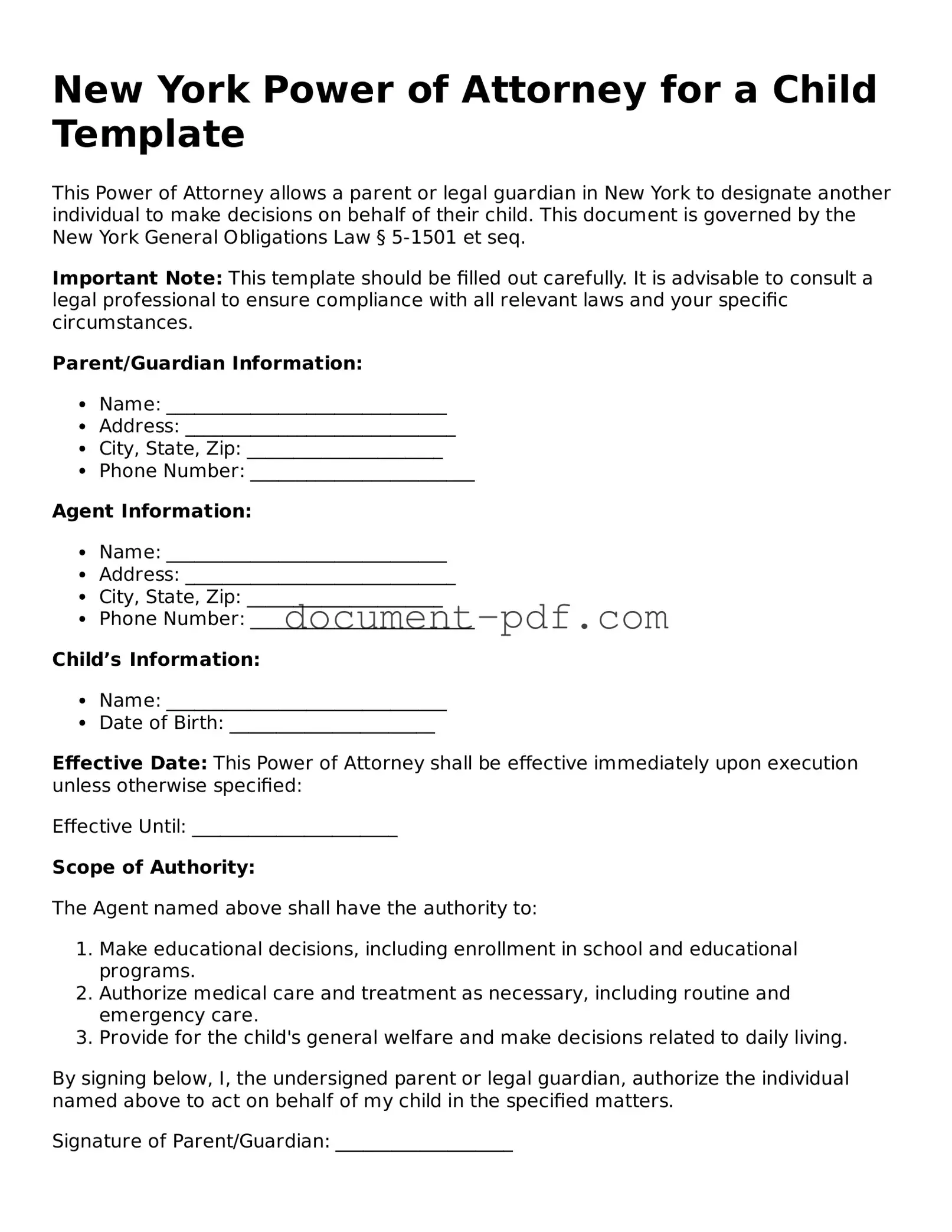New York Power of Attorney for a Child Template
This Power of Attorney allows a parent or legal guardian in New York to designate another individual to make decisions on behalf of their child. This document is governed by the New York General Obligations Law § 5-1501 et seq.
Important Note: This template should be filled out carefully. It is advisable to consult a legal professional to ensure compliance with all relevant laws and your specific circumstances.
Parent/Guardian Information:
- Name: ______________________________
- Address: _____________________________
- City, State, Zip: _____________________
- Phone Number: ________________________
Agent Information:
- Name: ______________________________
- Address: _____________________________
- City, State, Zip: _____________________
- Phone Number: ________________________
Child’s Information:
- Name: ______________________________
- Date of Birth: ______________________
Effective Date: This Power of Attorney shall be effective immediately upon execution unless otherwise specified:
Effective Until: ______________________
Scope of Authority:
The Agent named above shall have the authority to:
- Make educational decisions, including enrollment in school and educational programs.
- Authorize medical care and treatment as necessary, including routine and emergency care.
- Provide for the child's general welfare and make decisions related to daily living.
By signing below, I, the undersigned parent or legal guardian, authorize the individual named above to act on behalf of my child in the specified matters.
Signature of Parent/Guardian: ___________________
Date: ___________________
Notary Acknowledgment:
State of New York
County of ____________________________
On this _____ day of ____________, 20___, before me personally appeared ___________________ to me known to be the individual described in and who executed the foregoing Power of Attorney and acknowledged that he/she executed the same.
Notary Signature: ________________________
My commission expires: ___________________
